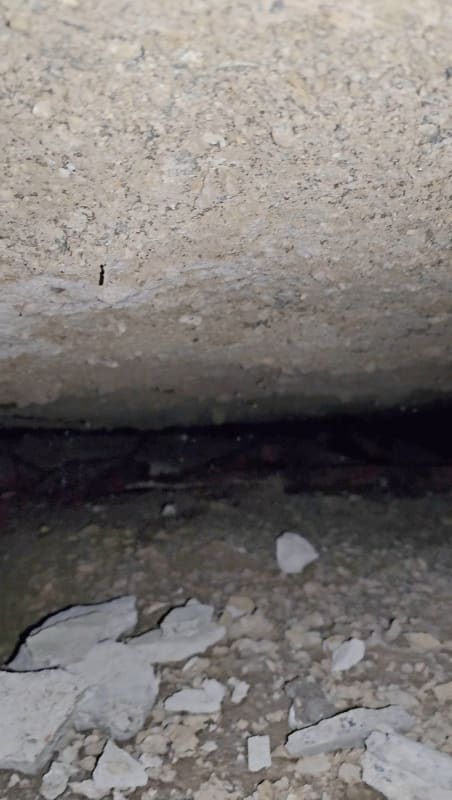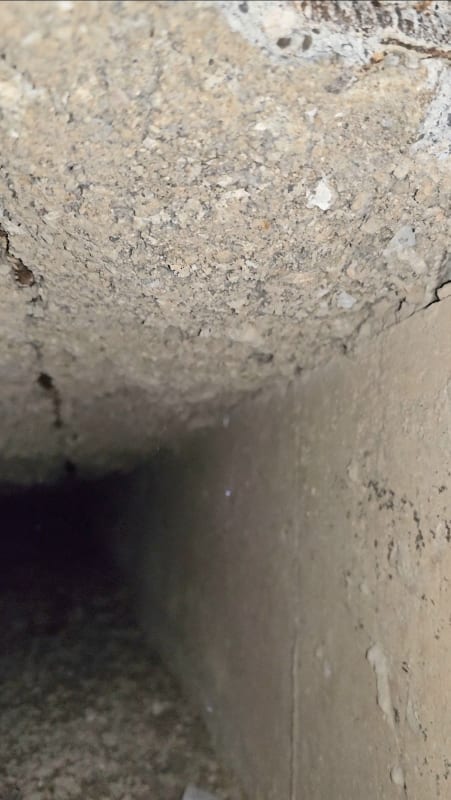Hi everyone,
I encountered this under a basement of a house, kver 40 years old. There is a gap that appears to be consistent under the whole concrete basement slab. This is kne foot deep under the slab soffit. The grade under it is almost flat. Concrete footing surface along on the perimeter is clean and doesn't say it was in contact with substrate (no stains). The bottom surface of the slab is rough as you can see. Not sure if the gap really extends under the whole basement area, but it looks so. The opening made in the basement slab was too small to check.
Do you think this is due to settlement?


I encountered this under a basement of a house, kver 40 years old. There is a gap that appears to be consistent under the whole concrete basement slab. This is kne foot deep under the slab soffit. The grade under it is almost flat. Concrete footing surface along on the perimeter is clean and doesn't say it was in contact with substrate (no stains). The bottom surface of the slab is rough as you can see. Not sure if the gap really extends under the whole basement area, but it looks so. The opening made in the basement slab was too small to check.
Do you think this is due to settlement?



